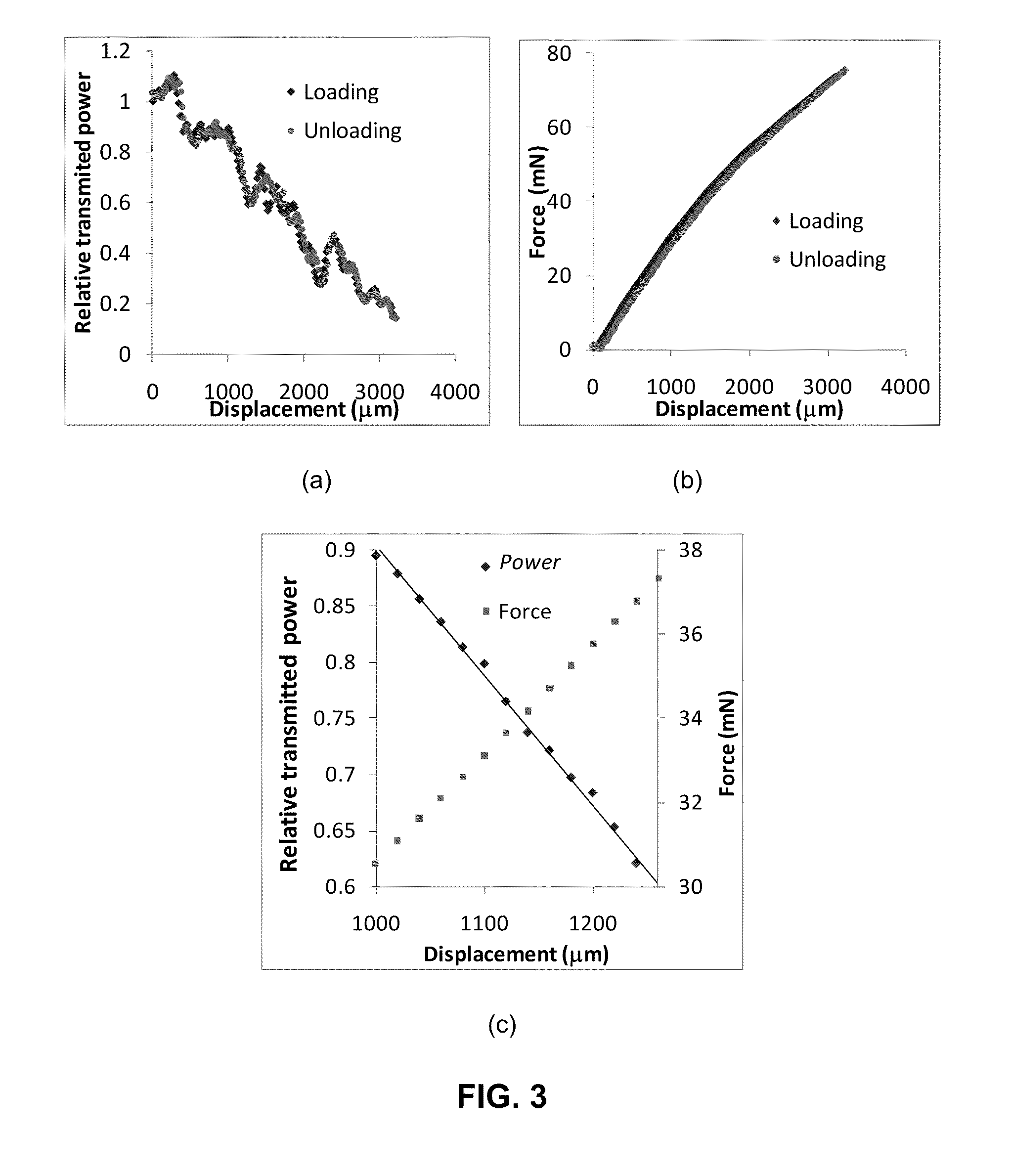Fiber-optic extensometer
a fiber-optic extensometer and fiber-optic technology, applied in the field of extensometers, can solve the problems of inaccuracy of measurements, cracks or closes, and difficulty in precisely measuring the displacement in the system with bulky extensometers or strain gauge type sensors, and achieves the effects of reducing data acquisition rate, reducing transmitted power, and high sensitivity measuremen
- Summary
- Abstract
- Description
- Claims
- Application Information
AI Technical Summary
Benefits of technology
Problems solved by technology
Method used
Image
Examples
Embodiment Construction
General Description
[0035]FIG. 2 illustrates an optical fiber loop sensor illustrative of the present invention and its working principle. As can be seen, the invention comprises an optical fiber loop that can be attached to a specimen, typically at two points, but the optical fiber loop also can be attached at multiple points, completely bonded to the specimen, or embedded inside of the specimen. FIG. 3 shows graphs of the loading and unloading of a representative optical fiber loop having a 6 mm radius. FIG. 3a shows the relative transmitted power (ratio of power transmitted through the deformed and undeformed loops) of the light through the loop. FIG. 3b shows the loop deformation with respect to the applied force. FIG. 3c shows correlation between the relative transmitted power, load, and displacement within one of the intermediate resonance peaks to show the possibility of a dual measurement range. Note that the slope of the relative transmitted power in FIG. 3c is two orders of...
PUM
 Login to View More
Login to View More Abstract
Description
Claims
Application Information
 Login to View More
Login to View More - R&D
- Intellectual Property
- Life Sciences
- Materials
- Tech Scout
- Unparalleled Data Quality
- Higher Quality Content
- 60% Fewer Hallucinations
Browse by: Latest US Patents, China's latest patents, Technical Efficacy Thesaurus, Application Domain, Technology Topic, Popular Technical Reports.
© 2025 PatSnap. All rights reserved.Legal|Privacy policy|Modern Slavery Act Transparency Statement|Sitemap|About US| Contact US: help@patsnap.com



